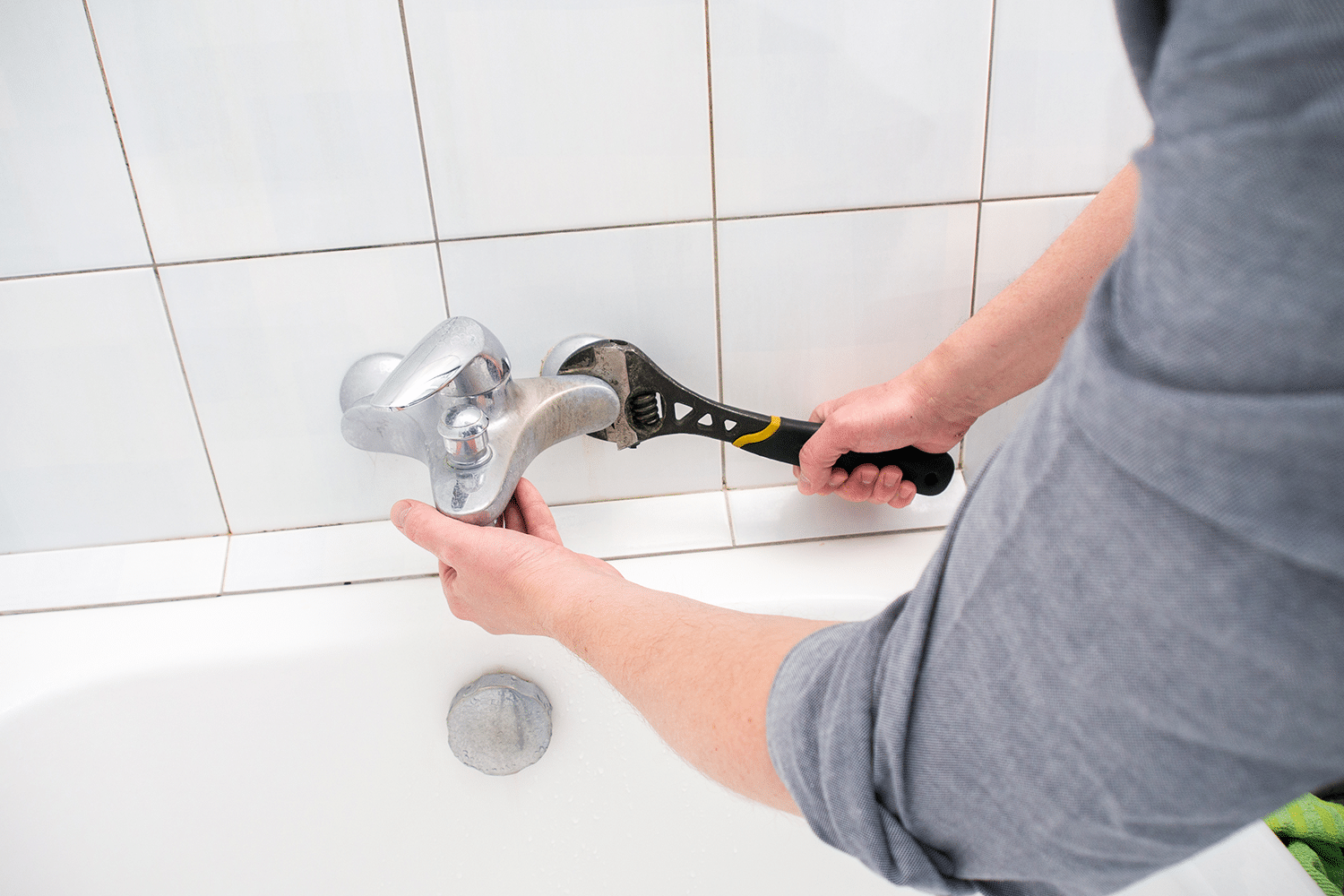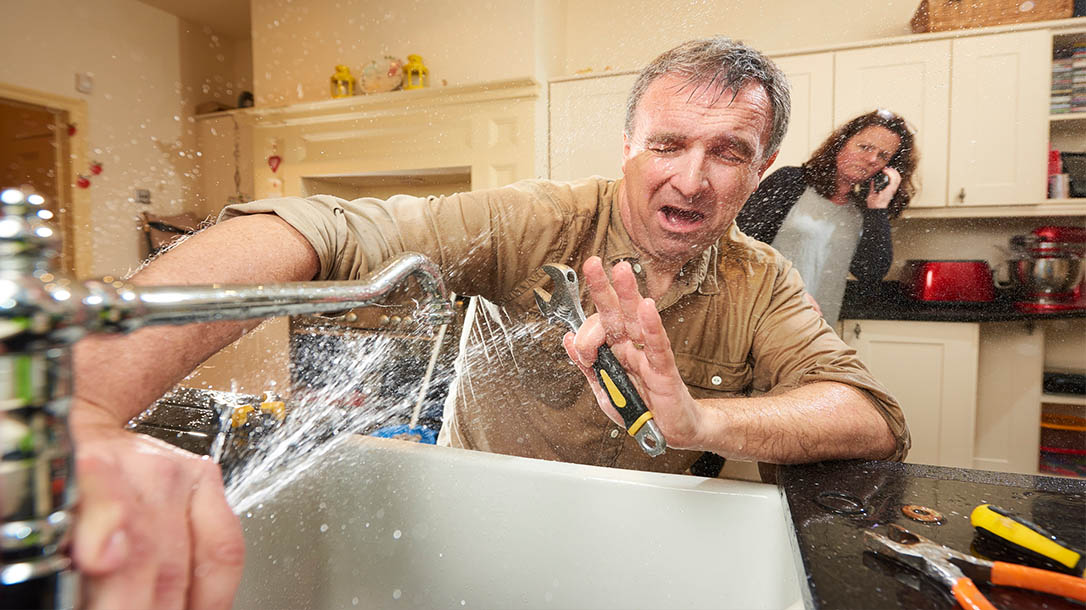Causes Why It's Essential to Fix a Dripping Faucet
Causes Why It's Essential to Fix a Dripping Faucet
Blog Article
Just how do you actually feel with regards to What Causes Leaky Faucets & How To Fix Them?

Dripping faucets could look like a small inconvenience, however their influence goes beyond simply the aggravation of the noise. From drainage to sustaining unnecessary financial costs and health and wellness dangers, ignoring a trickling faucet can lead to various repercussions. In this short article, we'll look into why it's critical to resolve this usual house problem promptly and effectively.
Wastefulness of Water
Ecological Influence
Leaking taps add dramatically to water waste. According to the Epa (EPA), a single faucet dripping at one drip per second can squander greater than 3,000 gallons of water per year. This not only strains water resources yet additionally affects environments and wildlife depending on them.
Financial Expenses
Boosted Water Expenses
Beyond the environmental influence, leaking faucets can blow up water expenses significantly. The collected wastefulness over time equates right into higher energy expenditures, which could have been avoided with timely repairs.
Potential Home Damage
Moreover, prolonged leaking can bring about harm to components and surfaces bordering the faucet. Water buildup can trigger discoloration, rust, and also architectural concerns if left ignored, causing extra fixing expenses.
Health and wellness Worries
Mold and Mold Development
The continuous presence of dampness from a leaking tap develops a perfect setting for mold and mildew and mold growth. These fungi not just endanger indoor air high quality however additionally pose health and wellness threats, especially for individuals with breathing conditions or allergies.
Waterborne Conditions
Stagnant water in trickling taps can come to be a breeding ground for microorganisms and other pathogens, boosting the danger of waterborne diseases. Impurities such as Legionella germs grow in stationary water, possibly causing major diseases when consumed or inhaled.
DIY vs. Specialist Repair work
Pros and Cons of DIY Fixing
While some might attempt to repair a trickling faucet themselves, do it yourself repairs come with their own set of difficulties. Without appropriate knowledge and devices, DIY efforts can intensify the concern or cause insufficient repair work, prolonging the trouble.
Benefits of Employing a Specialist Plumber
Employing a specialist plumber ensures that the underlying reason for the leaking tap is addressed efficiently. Plumbing technicians have the competence and devices to diagnose and fix faucet issues successfully, saving time and decreasing the danger of additional damage.
Step-by-Step Guide to Dealing With a Dripping Tap
Tools Needed
Before attempting to take care of a leaking faucet, collect the necessary tools, consisting of an adjustable wrench, screwdrivers, replacement components (such as washing machines or cartridges), and plumber's tape.
Usual Tap Issues and Their Solutions
Recognize the kind of faucet and the specific problem creating the drip. Typical issues consist of damaged washing machines, rusty shutoff seats, or malfunctioning O-rings. Refer to manufacturer directions or on the internet tutorials for step-by-step assistance on repairs.
Preventive Measures
Routine Upkeep Tips
To avoid leaking taps, do routine upkeep such as cleaning aerators, inspecting for leakages, and replacing damaged components without delay. Additionally, consider installing water-saving gadgets or upgrading to more reliable components.
Value of Prompt Repair Works
Addressing dripping taps as quickly as they're observed avoids further water wastefulness and potential damage, inevitably conserving both water and money in the future.
Impact on Residential Or Commercial Property Worth
Assumption of Well-Maintained Property
Preserving a residential or commercial property in good condition, including attending to upkeep issues like dripping taps, improves its viewed worth and value amongst prospective buyers or occupants.
Impact on Resale Worth
Qualities with properly maintained plumbing fixtures, consisting of taps, command greater resale worths in the property market. Dealing with trickling taps can contribute to a favorable perception throughout property assessments and arrangements.
Environmental Obligation
Specific Payment to Preservation
Taking responsibility for taking care of dripping taps lines up with broader efforts toward water conservation and ecological sustainability. Every individual's actions collectively make a substantial effect on preserving precious resources.
Lasting Living Practices
By focusing on punctual repairs and adopting water-saving behaviors, individuals contribute to sustainable living techniques that profit both existing and future generations.
Verdict
Attending to a trickling tap surpasses plain ease; it's an important step toward preserving water, lowering economic prices, and securing health and wellness and building. Whether with DIY repairs or specialist assistance, doing something about it to fix leaking faucets is a little yet impactful method to promote accountable stewardship of sources and add to a healthier, extra sustainable future.
How to Fix a Dripping or Leaky Faucet
A leaking faucet is one of the most common problems that homeowners encounter, but it being commonplace doesn’t make it any less annoying. The constant drip drip drip of a leaking bathtub faucet, showerhead, or sink tap can disturb your home’s serenity. Left neglected, a dripping faucet can also result in higher water bills and discoloration or mold growth in your sink or plumbing fixtures.
Fortunately, you don’t have to be a trained plumber to know how to stop a dripping faucet. With some basic tools, replacement parts, and a little patience, leaky faucet repair is a breeze. In this article, we’ll explain what causes dripping faucets and how you can fix them.
What Causes a Leaking Faucet?
Kitchen and bathroom faucets come in all manner of designs, but most involve some combination of valves, O-rings, seals, and washers. The O-ring is usually the weakest link, but any one of these pieces can wear down over time. Heat, moisture, temperature fluctuations, minerals, mold, and movement can contribute to warping and corrosion, breaking the watertight seal. This just comes with the territory of being a homeowner. Everything is always subject to wear and tear, and some component parts of your appliances and fixtures need to be replaced on occasion. At least replacement O-rings are cheap!
More rarely, dripping faucets can be a symptom of excessively high water pressure. Were this the case in your home, you would probably notice that the leak is not isolated to one faucet. Water pressure issues are harder to resolve on your own. We recommend contacting a professional plumber if you suspect your water pressure is too high.
How to Fix a Dripping Faucet
Pipe wrench or monkey wrench Allen wrench set Screwdrivers Old towel or rag Shut off the water.
Before you do anything, you need to turn off the water to keep from drenching your kitchen or bathroom. You should find a valve under the sink and against the wall. Once you’ve turned this valve, try turning the faucet on to confirm that the water source has been cut off.
If you can’t locate your local valve for the faucet you’re working on, you can always shut off the water to the house at the main valve. Of course, this will prohibit anyone from using the sinks, showers, or toilets while you’re working on the faucet that’s giving you trouble.
Plug or block the drain.
You’ll be disassembling the faucet and removing some small bits of hardware. Plug the drain with a stopper or rag to avoid the possibility of a small screw falling into your P-trap.
Take apart the faucet assembly.
There are several varieties of kitchen and bathroom faucets, each with its own manner of assembly. For detailed instructions on how to disassemble your faucet, you can refer to the fixture’s manual or contact the manufacturer. If you know whether you have a ball, disc, cartridge, or compression faucet, you can find detailed schematics online.
In general, you need to begin by removing the faucet handles. You might notice a small screw that you’ll need to remove with a screwdriver or Allen wrench. If you don’t see any visible securing hardware, it’s likely hidden under a decorative cap that can be unscrewed or popped off with flathead screwdriver.
Remove each piece methodically, consulting a schematic when necessary. Take notes or arrange the pieces in such a way to make it easier to correctly reassemble the faucet later.
Remove the cartridge.
Once you’ve removed the handles and securing hardware, you should be able to remove the valve cartridge or stem. Some cartridges will slide right out. Other faucet models will require you to loosen a nut with a pipe wrench before you can remove the valve stem.
Examine the exposed hardware.
With the cartridge or stem removed, inspect the component parts. Check the rubber O-rings for wear and tear. Also examine the seat washer for corrosion or other damage. These pieces are usually the responsible parties for a dripping faucet, but it’s worth inspecting the other component parts while you have the faucet disassembled.
Find replacement parts.
Once you’ve identified which faucet component has failed, find an identical replacement. Your local hardware store should have O-rings, seat washers, and other standard components in stock. If you have a luxury or uncommon faucet, you may have to contact the manufacturer for a replacement part.
It’s a good idea to take your old parts with you to the hardware store so you can compare them with the store’s inventory and be sure you’re purchasing the correct replacement.
Reassemble the faucet.
With your new parts in hand, reconstruct the faucet and handles. Don’t be tempted to overtighten screws or nuts. You might think this could create a better seal, but it can instead damage or bend a delicate part of the assembly and create a new problem for you.
Turn on the water and test the faucet.
The only thing left to do is test your work. Unplug the sink, turn the water back on, and try the faucet. Congratulate yourself on a job well done!
https://www.libertyhomeguard.com/how-to-fix-a-dripping-or-leaky-faucet/

We were shown that write-up about 4 Common Reasons for a Leaky Faucet through an associate on another web address. In case you liked our blog posting if you please make sure you remember to pass it around. Many thanks for taking the time to read it.
Report this page